The Digital Construction Awards attracted 165 entries this year, 84 of which have been shortlisted. Here, we detail the shortlisted entries for Delivering Sustainability with Digital Innovation.
This category recognises those organisations whose vision is a built environment that places great importance on carbon efficiency: an industry that continuously measures and manages carbon through all project stages, basing project decisions on CO2e emissions, not just cost and time.
Six entrants made the shortlist.
AtkinsRéalis | Virtual Site Access
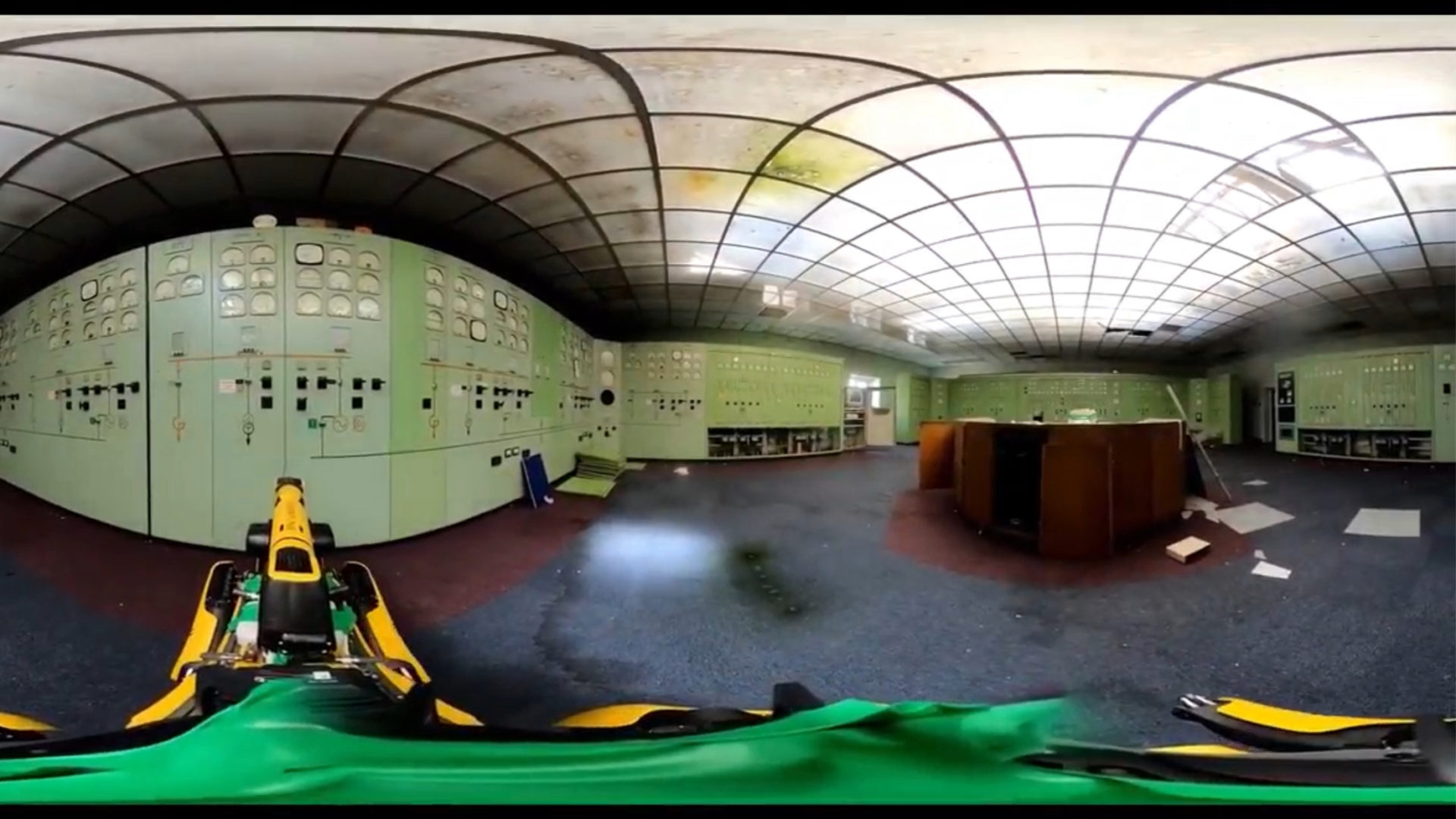
Since 2023, AtkinsRéalis has provided a virtual site access service (VSA) that has helped its clients reduce their carbon footprint.
VSA supports the full project lifecycle (cradle to grave) for multiple clients in the nuclear and power sector, including EDF, Sellafield, National Grid and Nuclear Restoration Services. The toolset allows remote management and visualisation of a physical site.
It combines industry-standard tools, technology and techniques with innovative bespoke applications and leading-edge technologies, such as quadrupedal robotics and cloud-based systems to deliver significant time, cost and carbon savings, reduce risks, and aid in collaboration and global knowledge transfer.
VSA can still require a project person or people to travel to a project site. However, the aim is to use such visits to deploy the identified hardware to collect site or live stream from site to the non-site based (UK or worldwide) teams, making it accessible and reducing the need for the rest of the project workforce to physically attend the site.
The tool uses 2D, 360-degree cameras and Faro, Leica SLAM and terrestrial-based laser (point cloud) scanners to collect data. AtkinsRéalis said the deployment of Trimble’s XR10 (Microsoft HoloLens) for live streaming is a first in the nuclear sector.
AtkinsRéalis estimates that in 2023 its clients saved more than 14,544 hours of travel, around £872,640 in costs (based on agreed metrics), saved 214,412kg of CO2, and in nuclear, radiological controlled environments, a dose to personnel of more than 3mSv.
Eckersley O’Callaghan | BayBuilder
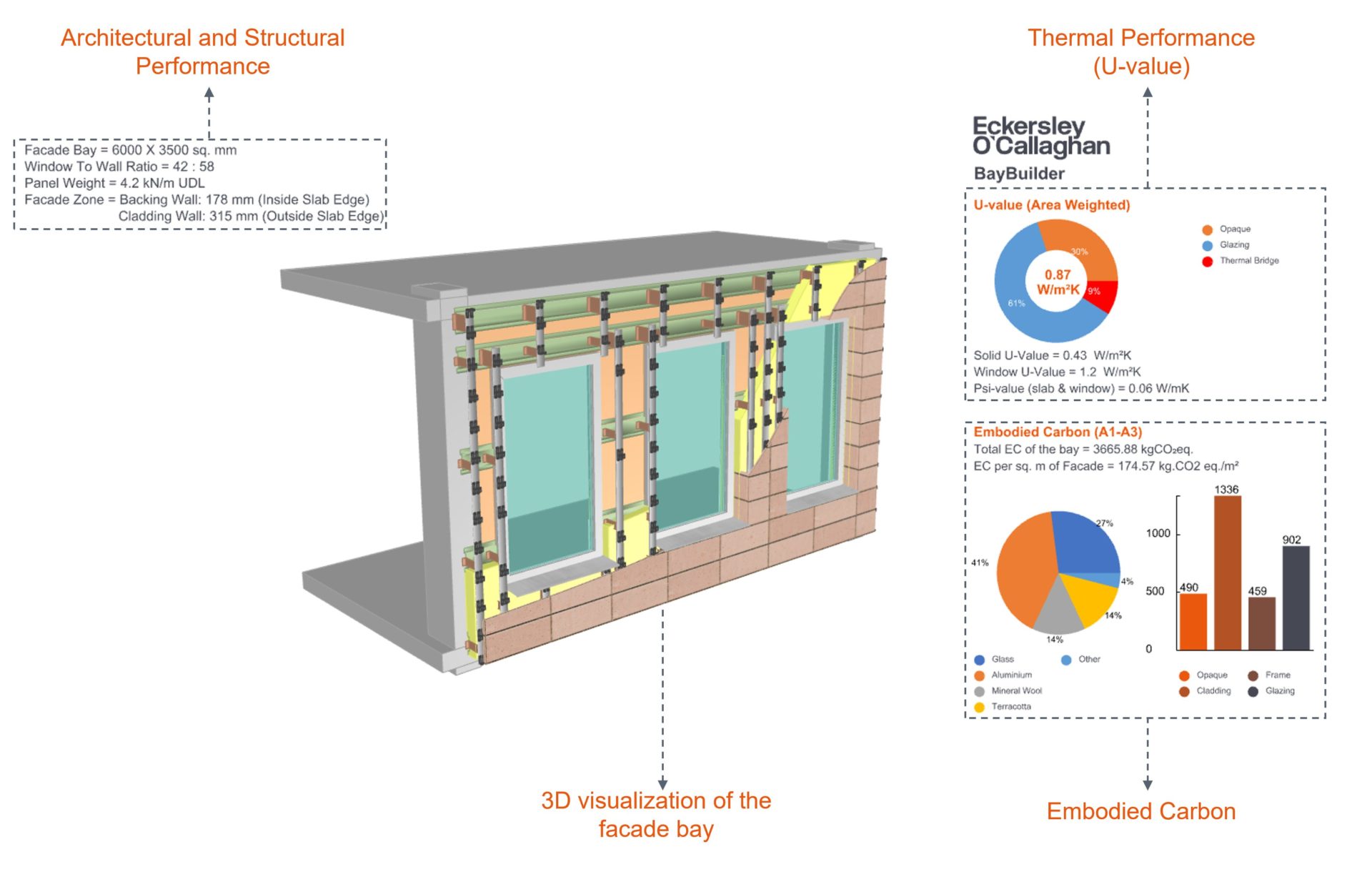
Eckersley O’Callaghan created a facade bay optioneering tool (BayBuilder) that allows quick toggling between different facade systems and materials to assess their performance and environmental footprint.
This tool generates detailed 3D models for each system, facilitating the estimation and comparison of embodied carbon and thermal performance. It also evaluates the facade’s load on the primary structure, offering a holistic understanding of its impact on the overall embodied carbon of the building. This empowers designers to make informed decisions, creating environmentally responsible buildings from the start.
Instead of relying on manual calculations and limited design exploration of typical models, BayBuilder uses parametric modelling and programming to automate and expedite the assessment of various facade systems. Through the integration of advanced algorithms and 3D modelling capabilities, the tool enables the comparison of different facade options, considering factors such as thermal performance (which influences operational carbon), embodied carbon of the facade, and facade weight (which affects the structure’s embodied carbon).
It also provides detailed insights into the holistic impact of each facade system on the building’s carbon footprint compared with the conventional approach. The tool’s ability to instantly generate detailed 3D models for facade bays allows for quick visual output in combination with more precise material and quantity assumptions. It also adheres to the methodology outlined by the Centre for Window & Cladding Technology for accuracy and compliance in carbon calculation.
BayBuilder is linked to Eckersley O’Callaghan’s continually updated in-house embodied carbon database to enable users to easily iterate between different materials and access the latest Environmental Product Declarations.
Ethos Engineering | Streamlining data visualisation for facility managers
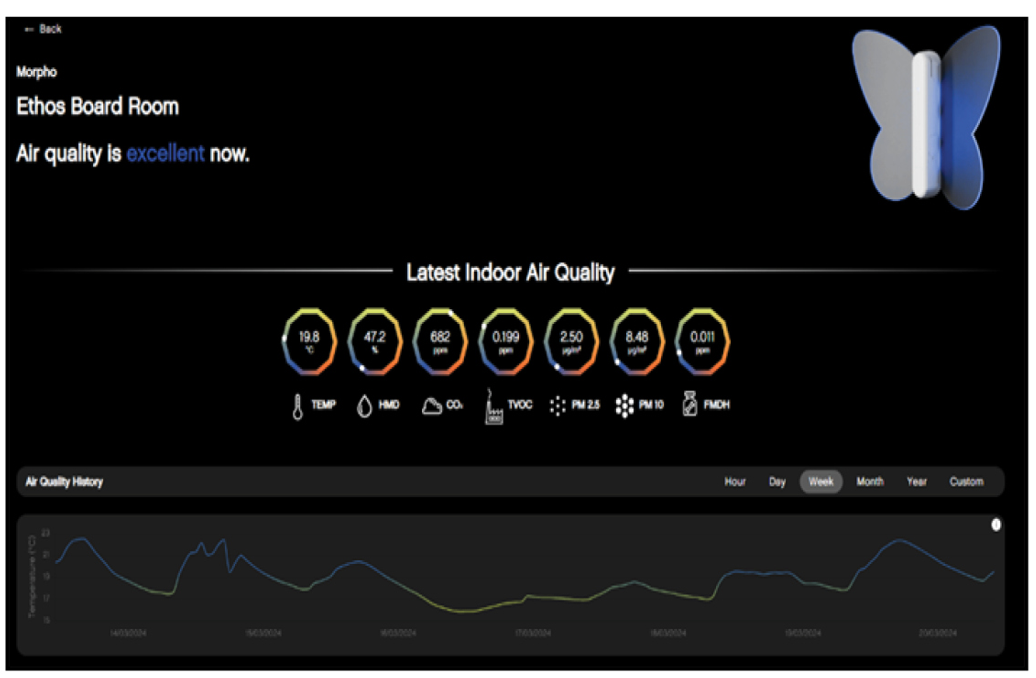
Ethos Engineering has worked with Autodesk to develop its in-house energy monitoring system (Living Lab) to push its capabilities to the next level by integrating it with Autodesk’s Tandem Digital Twin.
Living Lab was conceived as a pet project of the Ethos sustainability team to better control the energy consumed by their office. The Living Lab combines cutting-edge sensor technologies, workplace applications and employee engagement surveys to generate meaningful data across two phases.
However, upon the release of the second phase, there was so much data that it became arduous for Ethos to consolidate and draw meaningful findings from it.
A possible solution was to begin the development of a proprietary platform to house and visualise all the data from the Living Lab sensors. This proved difficult, so Ethos contacted longstanding provider Autodesk to see what solutions it might provide.
Autodesk suggested Ethos join the trial phase of its Tandem Digital Twin: a tool that reads multiple sources of data, houses a 3D interactive model of the built environment, and outputs graphs and insights for meaningful data interpretation to reduce energy consumption.
As the trial progressed with Autodesk, it became clear that packaging Living Lab, Tandem Digital Twin and the skillset of Ethos’ BIM Modeller Team together would be a unique service for the built environment – one that would empower facility owners/operators to manage their buildings/portfolios in a more energy-conscious manner.
Furbnow | Digital retrofit platform
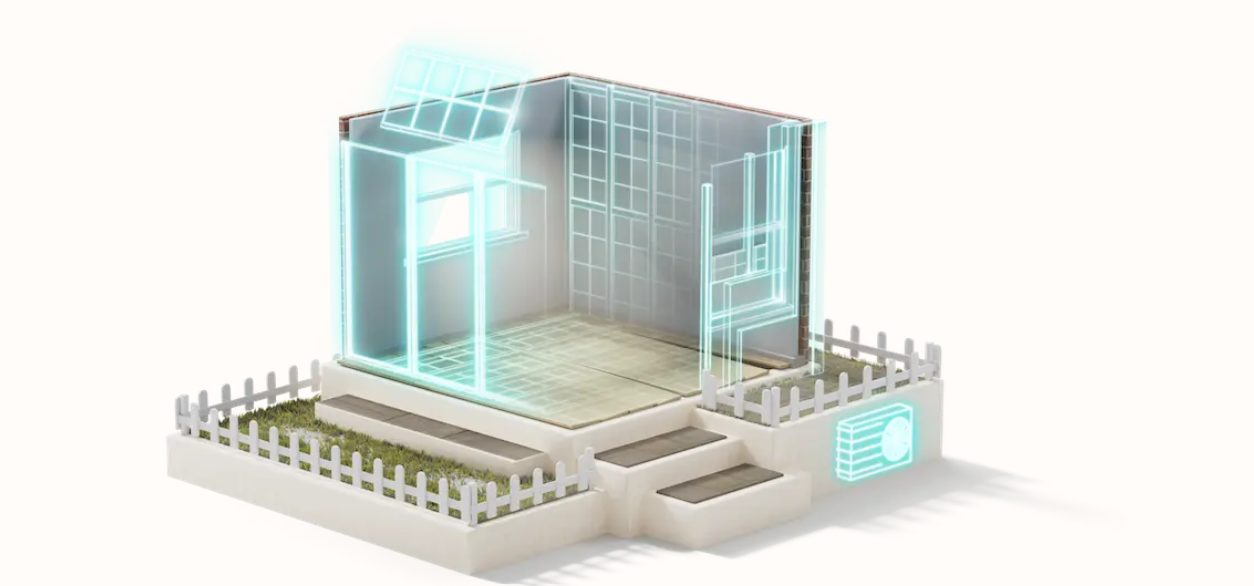
UK climate tech start-up Furbnow has developed a digital platform that is enabling significant reductions in CO2e emissions by optimising retrofit projects.
Through its platform, Furbnow aims to address a critical challenge in the UK’s journey to net zero: the inefficiency and complexity of the current home retrofitting process, which significantly contributes to domestic heating emissions that account for 17% of the country’s total emissions.
The digital retrofit platform aims to streamline the retrofit process by making it more accessible and scalable, and to foster mass adoption of energy efficiency projects by providing bespoke improvement pathways for individual properties.
Unlike conventional methods, which often rely on fragmented information and generic solutions, Furbnow’s platform offers an individualised project for each homeowner that addresses the particular needs of their property to reduce carbon emissions effectively.
The platform uses advanced algorithms and machine learning to analyse a wide range of data points specific to each property, including its size, age, construction materials and existing energy systems. It also integrates real-time sustainability metrics where possible, which allow homeowners to see the potential carbon emission reductions and energy savings associated with different retrofit options.
An intuitive user interface and advanced visualisation tools help homeowners understand the potential impact of various retrofit options in an engaging and easy-to-access format. Additionally, the system connects homeowners with certified contractors and retrofit professionals within a single platform, facilitating a more coordinated and efficient retrofit process.
ORIS Materials Intelligence/Sweco UK | Carbon assessment tool for infrastructure

Architecture and engineering consultancy Sweco partnered with ORIS Materials Intelligence to develop a plug-in that embeds advanced carbon assessment capabilities within Autodesk’s Civil 3D design software.
The ORIS Autodesk Civil 3D plug-in tackles critical industry sustainability challenges such as enabling early life carbon visibility of infrastructure design options, lack of supply chain visibility, inefficiencies associated with manual data entry for carbon reporting, and delayed sustainability prioritisation in infrastructure design.
The plug-in automates comprehensive carbon assessments compliant with industry standards (ISO and European) within the designer’s native workflow, addressing shortcomings of disconnected legacy processes. The tool has successfully bridged the gap between infrastructure design and sustainability, empowering Civil 3D users to become carbon calculation experts within their familiar design environment.
A key innovation of the plug-in is its ability to connect early-stage project drawings in Civil 3D to local material production sites, such as quarries, asphalt plants, and concrete plants. This feature empowers designers with rapid whole-life cycle carbon assessments across all project lifecycle stages, as well as visualised geographic supply chain mapping.
With this information, designers can make informed decisions on the most sustainable material sourcing options, reducing emissions and promoting local, circular economy-based road pavement design solutions and materials, including recycling.
For Sweco, the tool has met and exceeded requirements by delivering accurate carbon impact assessments, promoting responsible sustainable practices, and supporting emissions reduction commitments.
Sir Robert McAlpine | 1 Broadgate
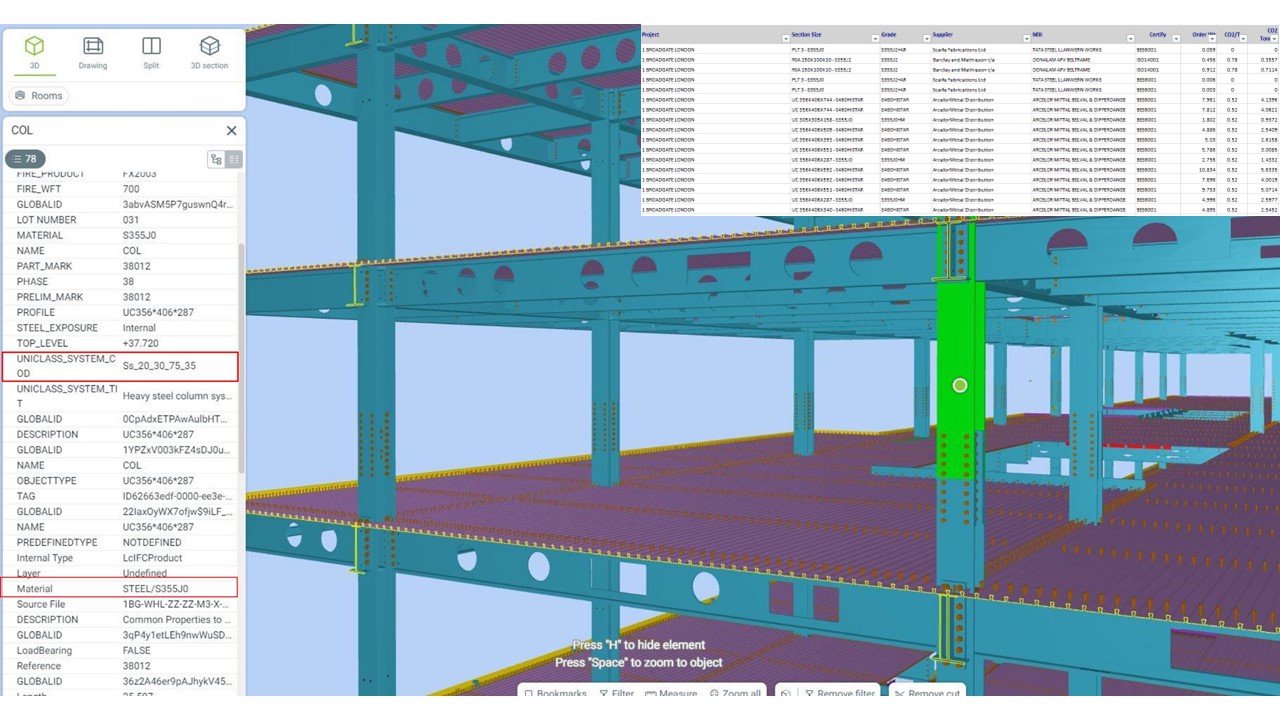
Sir Robert McAlpine has adopted a materials passport process on British Land’s 1 Broadgate – the UK’s first large-scale project to do so.
Materials passports are digital and interoperable datasets that collect the description of building materials to record what they are made of. The impact that applying this innovative process could have on the sustainability of the wider industry makes the passports a potential game changer.
McAlpine is introducing materials passports at 1 Broadgate through digitally-enabled methods to prioritise material reuse and repurpose while reducing waste and carbon emissions in construction.
In the past, materials sustainability information was only relevant to the project stage, capturing responsible sourcing certification and materials quantities. Information was collated during construction on materials delivered and associated responsible sourcing certification.
The materials passports help to link the carbon data to the model, supporting the connection between specific elements and their carbon impact. This new technique allows McAlpine to tie the carbon impact of individual elements to the graphical representation of the construction element in the form of 3D objects.
By having this retrievable information in a central hub, McAlpine allows building owners and end-users to have greater visibility and understanding on sourcing, carbon impact and even routes for circular economy management at end-of-life for materials.
The system is already producing results: during the demolition of the original 1 Broadgate building, 27% of the materials were reclaimed for reuse, either as part of the new structure or within the wider Broadgate campus.
Celebrate with the best
The winners of the Delivering Sustainability with Digital Innovation category, alongside the victors of the other 12 categories, will be revealed at the awards dinner on 2 July at the Brewery in London.
You can join them by booking your places at the awards.
The Digital Construction Awards celebrate best practice and reward innovation in the application of information management and digital technology in the built environment sector.
The awards are run by Digital Construction Week, the Chartered Institute of Building (CIOB), and Construction Management and BIMplus.
Awards sponsors include Bluebeam, Procore, Revizto and the CIOB.












